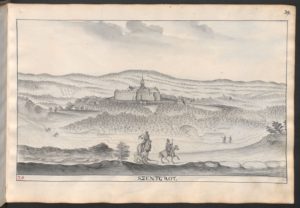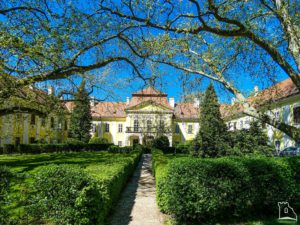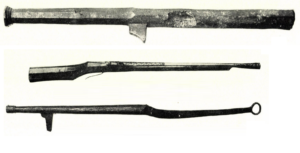Zalaszentgrót

Zalaszentgrót or Szentgrót castle is located in Hungary. This castle was one of the smaller fortifications in the chain of Borderland castles of Zala County during the Ottoman wars. These were Hídvég, Komár, Zalabér, and Zalavár castles, the witnesses of many forgotten fights. Zalaszentgrót was literally in the throat of the enemy but it has never been occupied by the Turks. I wonder what would have happened to us without the heroic stand of these small forts of the 1,000-mile-long Borderland that separated the western part of Europe from the Ottoman Empire.

The area belonged to the Türje Clan and its castle was standing already in 1299. Later, it has changed hands many times in the next centuries. (Please, note that I use the Oriental name order for Hungarians where family names come first.) The settlement became a market town in 1397, and its lords came from the Szentgróthy family. The widow of Szentgróty László wed Hagymásy László in 1433. From this time on, the castle was jointly owned by the Hagymásy and the Szentgróthy family.
After the death of King Matthias Corvinus, Hagymásy Miklós changed sides and became loyal to Habsburg Maximilian in 1491 so the Hungarian king Ulászló took away the castle and gave it to the Bánfy family. However, the Bánfys had no proper troops to take away the castle so it remained in the Hagymásys’ hand.

This was the time when the infamous Hagymásy Kristóf was the lord of the castle and was a sort of robber knight who even murdered Ujlaki Lajos, the bishop of Veszprém. The Hagymásy family had ruined the Monastery of Türje and took away its stones to strengthen their castle.
Zalaszentgrót castle suddenly became a more important fortification when the Ottoman Turks attacked the country. It had to beat back many Turkish attacks from 1550 on but the immediate area paid taxes to the Turks who succeeded in isolating the castle from its supplying villages.

After Kanizsa castle’s loss, Szentgrót castle became the key fort of the castle belt defending the valley of the River Zala. The castle was surrounded by marshland so it was easily defendable. It was placed directly under the Royal Court’s command. Despite this, the Hagymásy family members have remained the captains of Szentgrót castle and they paid 600 Hussars to garrison the castle. In exchange for this, they didn’t have to pay taxes to the king or to the bishop. The military Borderland was made up of two or three layers, and not every castle belonged under the Habsburg king’s authority. Here is more about the borderland system:
https://www.hungarianottomanwars.com/essays/the-borderland/
As the Ottoman threat was growing, the reinforcement of this castle had to be provided, we can read the decisions of many Diets about it. The castle had been strengthened five times in 80 years. The Turks tried to attack the castle many times during the 16th-17th centuries but could never occupy it and it had never had a serious siege.

János, István, and his brother Hagymásy Péter were the captains of the fort in 1634 who beat back many assaults of the enemy and they even had the time to have a bell cast for the local Lutheran church. At that age, it was not uncommon that the castles had two captains because one of them was always on the road to patrol, ambush, or raid the enemy while the other one had to stay at home to defend the castle. In the case of having just one captain, the wife of the captain supervised the defenses, quite effectively, like the lady of Buzita castle who was shooting at the enemy with a hook-gun:
https://www.hungarianottomanwars.com/essays/the-lady-with-a-hook-gun-in-buzita-castle/

Count Batthyány Ádám bought the inheritance of the Hagymásy family in 1654 and became the castle’s owner in 1663. The town was severely damaged by the Turks in 1681. There were only 32 soldiers in it in 1682 but it was guarded by 250 Hussars and 300 Hajdú soldiers in 1688. At this age, the rate of cavalry and infantry in the garrisons was 1:1. The contemporary saying said that “a castle can be defended only in the field” so the Hussars were endlessly on the roads to beat back the mobile Ottoman units that were raiding the countryside. Here is more about Hajdú soldiers:
https://www.hungarianottomanwars.com/essays/the-hungarian-hajdu-warriors/

Fort Kanizsa was retaken in 1690 so Szentgrót castle has lost its importance. In the War of Independence of Prince Rákóczi Ferenc II, the Habsburgs destroyed the fort during its siege in 1710 but the town had suffered great losses before it by the raids of Austrian, Serbian, Hungarian, and Croatian marauders. The Batthyányi family turned the remains of the castle into a palace between 1767 and 1787. Now, the old Borderland castle is hiding under the Batthyány palace but some Renaissance doorframes were carefully built into its halls.

Dear Readers, I can only make this content available through small donations or by selling my books or T-shirts:
Please, feel free to support me with a coffee here:
You can check out my books on Amazon or Draft2Digital, they are available in hardcover, paperback, or ebook:
https://www.amazon.com/dp/198020490X or at https://books2read.com/b/boYd81

My work can also be followed and supported on Patreon: Become a Patron!http://Become a Patron!

[wpedon id=”9140″]

https://hungarianottomanwars.myspreadshop.com/all















